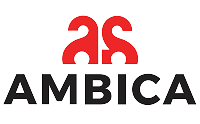Stainless Steel Grade 408
Introduction
Stainless steel is durable and resistant to corrosion; hence, it has become popular. Different grades of steel have distinctive characteristics. This article will discuss one such variant of stainless steel Grade 408. It will also lighten its chemical, mechanical, and physical properties. It will also include usage, welding methods, and applications of 408 stainless steel.
408 Chemical Composition
- It is ferritic stainless steel.
- Its significant ingredients are chromium and nickel.
- It comprises 10.5% – 12.6% Chromium, giving it good corrosion resistance.
- The 0.6% to 1.2% nickel concentration adds strength and hardness.
Some other alloying elements are manganese, silicon, sulphur, phosphorous, and carbon.
408 Mechanical Properties
- Tensile Strength: The tensile strength for SS 408 ranges between 450 and 600Mpa.
- Yield Strength: It has a yield strength of approximately 275 MPa.
- Elongation: Its elongation is around 20%.
- Hardness: The Rockwell hardness of Grade 408 is about 7482 HRB.
408 Physical Properties
- Density: The specific gravity of Grade 408 stainless steel is around 7.75 g/cm³.
- Melting Point: Its melting point is approximately 1480°C (2700°F).
- Thermal Conductivity: Thermal conductivity is lower than other stainless steel grades.
- Specific Heat Capacity: About 500 J/(kg·K).
408 Stainless Steel Uses
- Automotive Applications: SS 408 resists corrosion, and its endurance to high temperatures is remarkable. Hence, SS 408 is used to make exhaust systems and automotive parts.
- Appliance Manufacturing: SS 408 is typical for household appliances such as ovens, refrigerators, and dishwashers.
- Heat Exchangers: Its high corrosion resistance makes it suitable for heat exchanger applications.
- Cookware: Because of its toughness and ability to prevent discoloration, it is used for manufacturing cooking utensils.
- Architectural Applications: With its attractiveness, it is used for architectural structures and cladding because it doesn’t rust.
408 Stainless Steel Welding
- Weldability: In general, grade 408 is suitable for welding.
- Preheat and Interpass Temperature: Preheating with interpass temperatures of 149260°C (300250°F) is advisable to prevent cracking.
- Welding Methods: Some typical welding techniques include shielded metal arc welding, gas tungsten arc welding, and gas metal arc welding.
- Post-Weld Heat Treatment: Post-weld heat treatment is not required for SS 408.
408 Stainless Steel Applications
- Automotive Exhaust Systems: Grade 408 has a solid ability to resist high temperatures or corroded atmospheres. Hence, it is apt for manufacturing car exhaust systems.
- Kitchen Appliances: It is perfect for making kitchen utensils such as ovens and dishwashers.
- Heat Exchangers: The SS 408 is corrosive, so its most appropriate use in many industries is as a heat exchanger.
- Architectural Cladding: The reason grade 408 is so popular when it comes to architectural cladding on buildings is due to its aesthetic properties and high corrosion resistance.
- Cookware: It is generally used to produce pots, pans, cookware, and other cooking utensils like forks, spoons, etc. because they have a longer life and resist staining.
Conclusion
In summary, grade 408 stainless is adaptable and has many uses, ranging from car parts to home appliances. Its chemical content, mechanical features, and physical peculiarities make it a significant selection for many industries. Awareness of the characteristics of Grade 408 helps manufacturers, engineers, and consumers decide whether this material meets specific needs.
